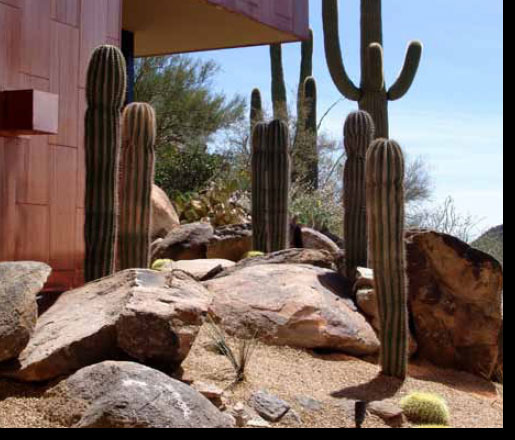Living in the desert presents many unique challenges to those who choose to do so, and for property owners or those interested in designing and maintaining beautiful landscapes that require little water is just one of these. As the cost of water continues to rise and rain water catchment is becoming more and more of an issue in some states, being able to offer visitors to your property the stunning natural look you crave is becoming more and more of a challenge. One way to go about accomplishing this is to hire a professional landscape architect to design and install a landscape that will be eye-catching and drought resistant, but for those looking to do a little work on their own or who simply wish to have somewhat of an idea of what the professional they hire is talking about, here are some simple tips to understanding what is commonly known as xeriscaping.

What is Xeriscaping
Xeriscaping is not the same as native planting. The first focuses on incorporating plants that do not need as much water as others, but it does not specify that they be native. This allows the xeriscaper more leeway in creating abundantly beautiful and diverse landscapes while not using a lot of water to maintain them. Native planting is pretty self explanatory, and while the rational behind it is sound, who in the desert really wants to landscape their property with cactus and sagebrush.
When to water
Saving water is obviously first accomplished by carefully choosing plants that do not require a lot of it, but goes far beyond this. How you water is an incredibly important and frequently overlooked issue in landscape design, akin to spending hours choosing the right color for you living room but not really paying any attention to whether the dry-wallers did a good job or not. Watering should never occur during the heat of the day, and when it does take place, should never be sprayed in a fine mist or in any way distributed through the air in order to reach the plants as about half is lost this way.
How to water
Using drip irrigation and soaker hose are two great ways to water in a conservative and effective manner, as the larger drops and the slower water disbursement rate ensures maximum use of the water by the plants, and practically negates water waste. What watering in this manner accomplishes for the plants is strong, healthy, and deep root systems that are capable of surviving the elements better, especially when they are mulched well. Which leads me to my last point.
It’s all linked
Everything in an eco-system is linked, and this is the same in a xeriscape design. Without adequate and appropriate mulch nothing else really matters. Mulch prevents water evaporation during watering and from the soil itself due to heat and wind, and thus, obviously, conserves water. Less water equals less money and a happier you and a more sustainable planet. So armed with this knowledge explore the concepts of xeriscaping some more, and let your imagination run wild as you see the possibilities unfolding before you.
The landscape design specialists at Tucson, Arizona based The Garden Gate and A Z Landscape Maintenance can help you design, install and maintain your desert landscape project.

